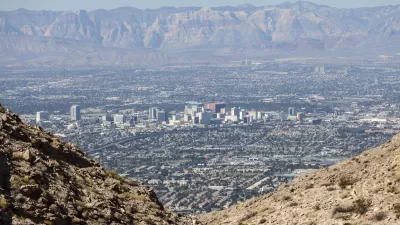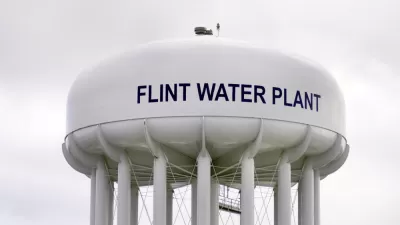The fixed costs of infrastructure projects leave cities like Flint struggling to pay their bills with fewer people pooling their resources.
Alana Semuels examines either side of the vast chasm separating American communities: "The contrast between San Jose and Flint illuminates a truism about regional inequality in America: The cities that are struggling the most also have the least resources to deal with their problems."
The article goes into a detailed comparison between the benefits of having a growing population, workforce, and tax base, like in San Jose, and the drawbacks of a shrinking population, like in Flint. The imbalance between the two regions is put into even more stark perspective when considering the Californian drought compared to the city of Flint's proximity to the Great Lakes, which also happens to be the largest supply of freshwater in the world. Yet, Flint's water is expensive and toxic, while San Jose is investing huge sums in new water infrastructure.
Semuels also shares news that the U.S. Senate is considering legislation that would provide relief to communities struggling to cover the expenses of infrastructure that provides the basic human services:
A bill introduced by Michigan Senators Debbie Stabenow and Gary Peters, both Democrats, would authorize the federal Drinking Water State Revolving Fund to make up to $100 million in subsidized loans or grants for infrastructure improvements to any state that receives an emergency declaration because of a public-health threat due to contaminants in a public drinking-water system.
The article includes more examples of infrastructure challenges that compare to Flint's, as well as more discussion about how shrinking cities can take a page from San Jose in approaching their infrastructure challenges.
FULL STORY: A Tale of Two Water Systems

Alabama: Trump Terminates Settlements for Black Communities Harmed By Raw Sewage
Trump deemed the landmark civil rights agreement “illegal DEI and environmental justice policy.”

Study: Maui’s Plan to Convert Vacation Rentals to Long-Term Housing Could Cause Nearly $1 Billion Economic Loss
The plan would reduce visitor accommodation by 25% resulting in 1,900 jobs lost.

Planetizen Federal Action Tracker
A weekly monitor of how Trump’s orders and actions are impacting planners and planning in America.

Waymo Gets Permission to Map SF’s Market Street
If allowed to operate on the traffic-restricted street, Waymo’s autonomous taxis would have a leg up over ride-hailing competitors — and counter the city’s efforts to grow bike and pedestrian on the thoroughfare.

Parklet Symposium Highlights the Success of Shared Spaces
Parklets got a boost during the Covid-19 pandemic, when the concept was translated to outdoor dining programs that offered restaurants a lifeline during the shutdown.

Federal Homelessness Agency Places Entire Staff on Leave
The U.S. Interagency Council on Homelessness is the only federal agency dedicated to preventing and ending homelessness.
Urban Design for Planners 1: Software Tools
This six-course series explores essential urban design concepts using open source software and equips planners with the tools they need to participate fully in the urban design process.
Planning for Universal Design
Learn the tools for implementing Universal Design in planning regulations.
Caltrans
Smith Gee Studio
Institute for Housing and Urban Development Studies (IHS)
City of Grandview
Harvard GSD Executive Education
Toledo-Lucas County Plan Commissions
Salt Lake City
NYU Wagner Graduate School of Public Service





























